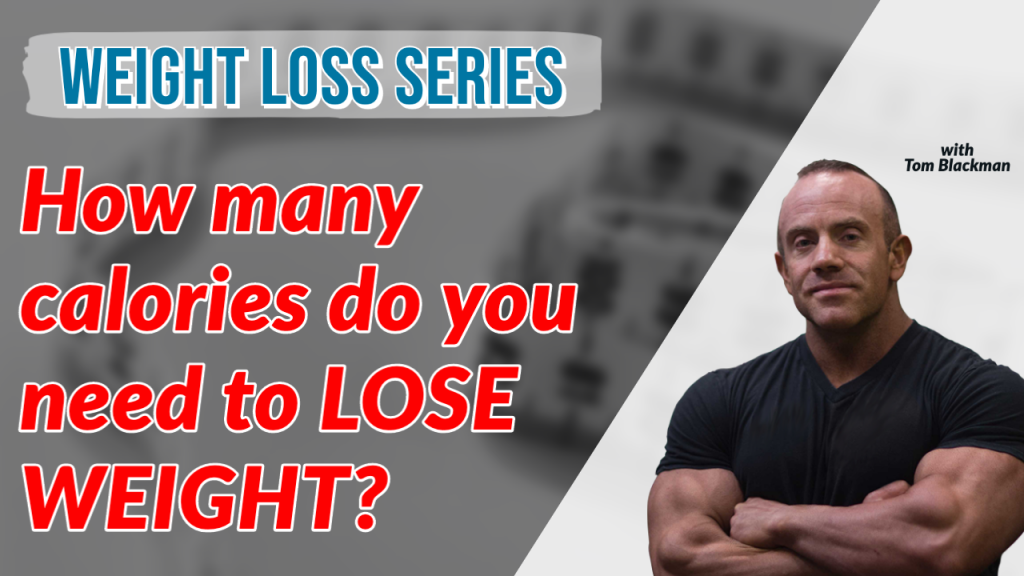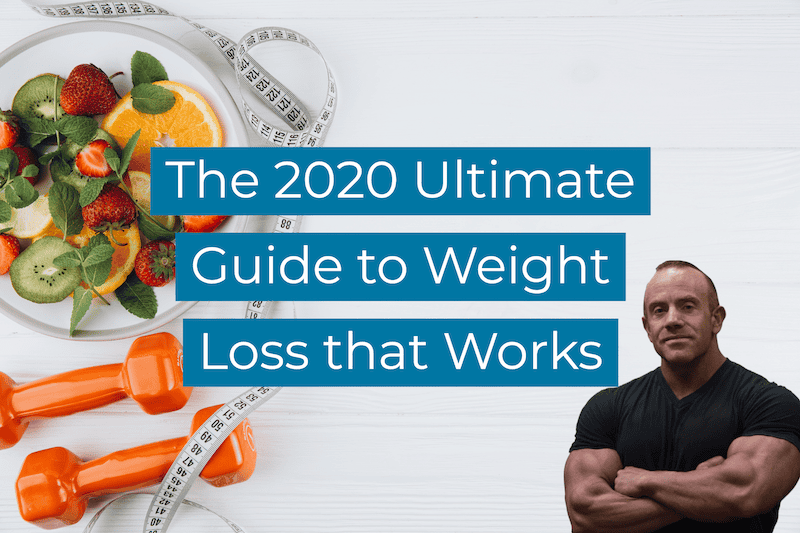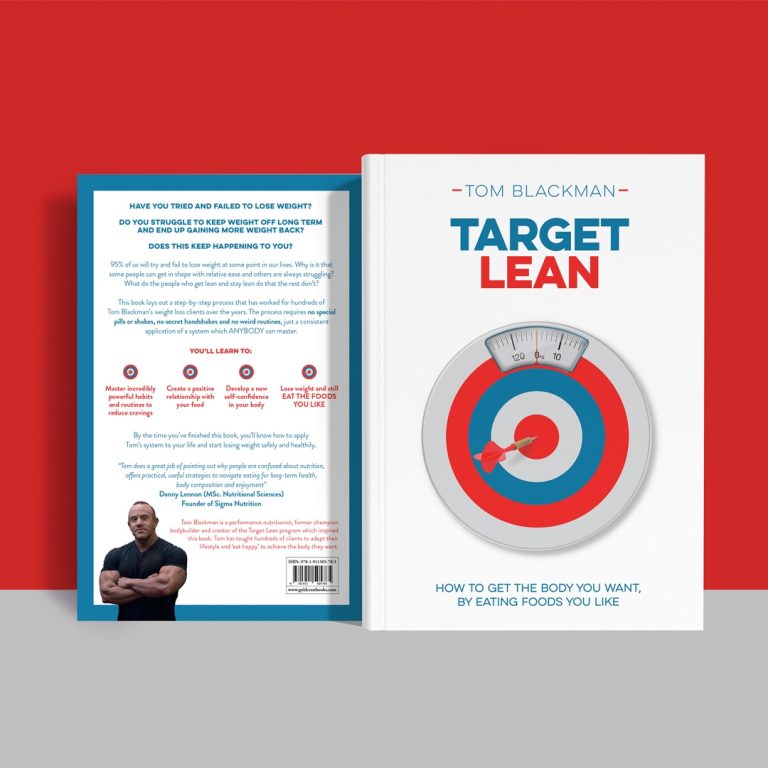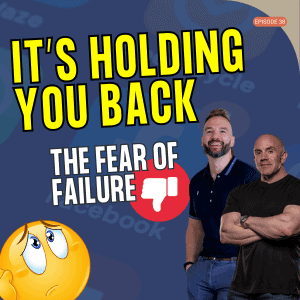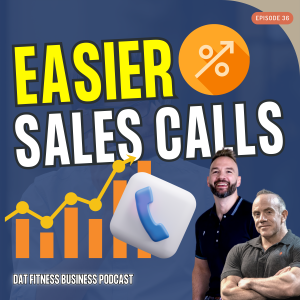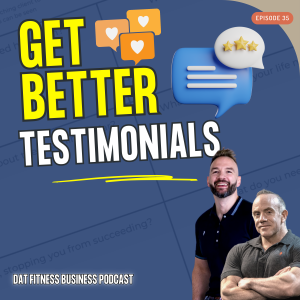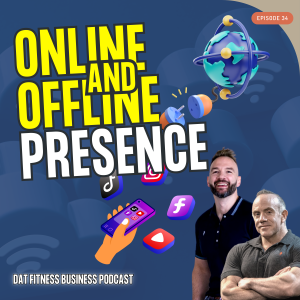Calculate your calories for losing weight without over restriction that leads to you hating life and the foods that might help you on the way
If you are trying to lose weight by yourself then you’ve probably tried a number of diets already which have not worked. You’ve tried weight loss pills, shakes and supplements which have robbed you of money. They weren’t the pounds you’ve being trying to lose though.
You might know that fat loss has something to do with calories and creating a deficit, but how do you know what your calories for weight loss are?
If that’s where you are then read on. In this article I’ll cover the difference between calculators. Which one you need, the foods you can eat to help you lose weight, which foods to avoid and when you are likely to see results on your waistline.
Contents
- What is a calorie deficit and why does it matter
- Which calorie calculator is best?
- How can I lose 2lbs of fat a week
- How to lose belly fat naturally and start to see results in 2 weeks
- Foods to eat that might help you lose weight
- Low calorie or weight loss friendly foods
- Eating high protein meals for weight loss
- Foods to be wary of when trying to lose weight
- Can I lose weight without exercise?
- Summary – How to keep weight off for the long term
I’m asked many times, “what should I eat to lose weight?” when the real question is “how many calories can I eat and lose weight”
A calorie deficit is where you eat (or drink) less calories in the day than you expend through exercise and general moving about. There’s also the calories you use to keep you alive, this is called your BMR (Basal Metabolic Rate) sometimes referred to as RMR (Resting Metabolic Rate).
The only difference between the two is that BMR would be if you are asleep or in a coma and RMR is if you were awake and sat on the sofa vegging out.
There’s very little difference between the two. Since most of us are awake and not in a coma for the majority of the day, nutritionists normally use RMR as a measure of pure sedentary energy use.
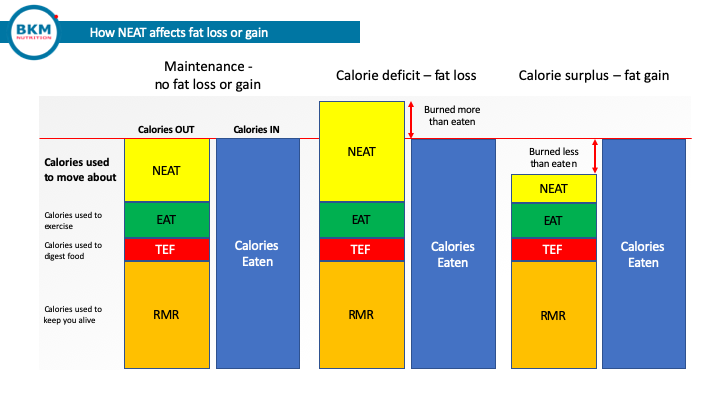
On top of RMR there is TEF – Thermic Effect of Food, this is the energy you expend digesting and extracting energy from your food. Energy must be put in to get energy out.
Very little energy is obtained from green leafy veg and foods like cucumber and celery which is why they are sometimes referred to as negative calorie foods. This is not strictly true but I’ll come to that in more detail later in the article.
TEF and RMR can’t really be manipulated to a huge degree without chopping off an arm or eating virtually no food so these are generally taken as a constant.
The variable energy out in the day mostly comes in the form of your movement which takes 2 forms.
NEAT – Non Exercise Activity Thermogenesis
EAT – Exercise Activity Thermogenesis
NEAT is all the moving you do when not in the gym, running, hiking, swimming etc and you may have guessed that EAT is the energy you expend when you are doing those activities.
All these components form your Calories Out side of the CICO equation (Calories In vs Calories Out) and to lose weight you need to eat less calories than the sum of these components.
To maximise the calorie deficit would be easy if you could get away with eating no food of course. This would create a huge deficit if you were very active but going a day without food is difficult.
Of course for some people that’s possible.
A story about a man who was severely overweight and ate literally nothing until he dropped his body fat to low levels is one documented case. Although I’d not advise it for 99.9% of people.
At the other end of the spectrum you could just eat 100 calories under your maintenance level, where Calories In equals Calories Out, and you would lose body fat, albeit at a very slow pace.
Realistic calorie goals
For most of use we need to be somewhere in between. I normally recommend a 500 kcal deficit for most clients. Although this will differ with extremes, for example a 50kg woman will find a 500kcal deficit below maintenance a very low level of calorie intake and possibly unhealthy. Conversely a 120kg man will be able to go to an excess of 500kcal quite easily as the percentage of deficit to maintenance is much lower.
Whatever your circumstances you need a starting point and to get there you’ll need a calculator to help you establish it.
Calorie calculator vs TDEE calculator vs Weight loss calculator vs BMI calculator vs Macro calculator, which is best for you?
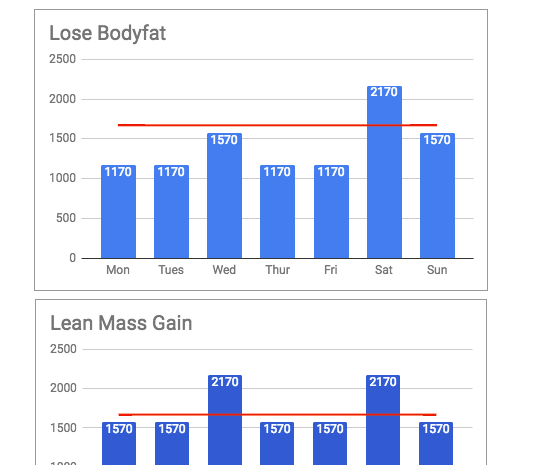
There are many calorie calculators available to use on the internet. While they all have different names they all essentially do the same thing. Calculate your daily expenditure of energy.
To create a calorie deficit you first need to know what your maintenance calories are, this is the amount of calories to maintain your current level of body fat. This is composed of
- Resting Metabolic Rate (the energy you burn staying alive)
- Thermic Effect of Food (the energy you burn digesting food)
- Non Exercise Activity Thermogenesis (the energy you burn moving around)
- Exercise Activity Thermogenesis (the energy you burn exercising)
The combination of these 4 elements is sometimes referred to as your Total Daily Energy Expenditure or TDEE. To get a calorie deficit we then take that figure and reduce it by around 20% of the total calories. This then gives you the weight loss calories.
Here’s an example:
TDEE = 2500 kcal
20% reduction = 500 kcal
Weight loss calories = 2000 kcal
Therefore if this was you and you ate 2000 kcal per day you would lose weight because the calorie deficit would mean your body would need to find 500 kcal every day to keep you at that output level.
How can I lose 2lbs of fat a week?
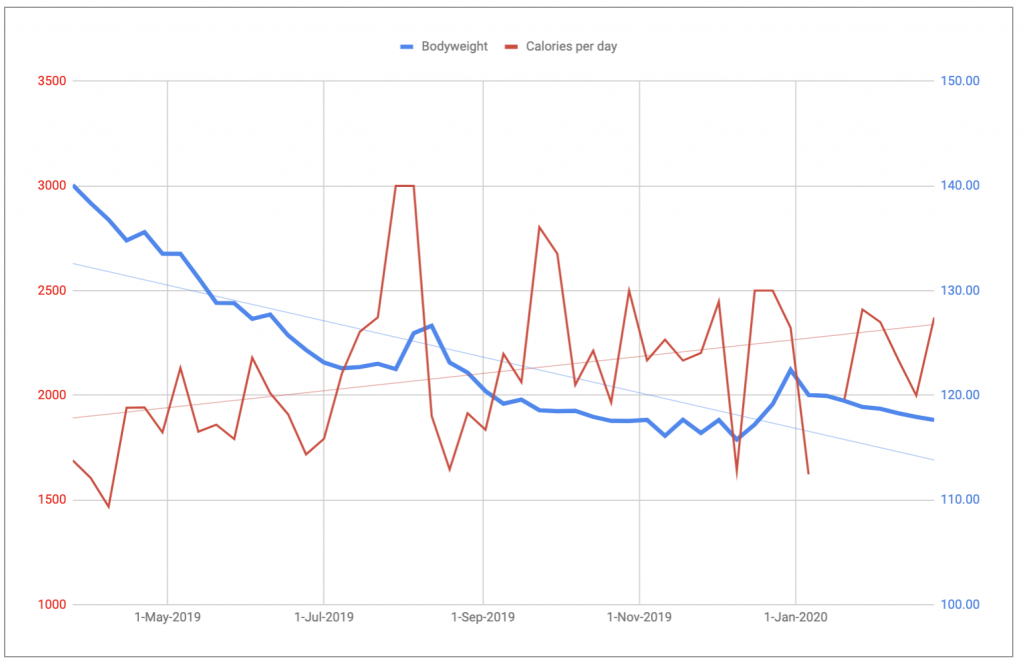
This deficit of 500 per day, if kept constant, would give a total deficit of 3500 per week (7 days x 500). This would equate in fat loss terms to 1lb of fat. All things being equal you should drop 1lb a week. To drop 2lbs a week you’d logically increase the deficit to double the effect, however, a 1000 kcal deficit would be very hard to maintain unless you have a lot of body fat to lose.
It’s very common for very overweight individuals to drop 2-4lbs per week when they start a new diet but this levels out after a few weeks. It’s also important to remember that not all weight that is lost is body fat. A high percentage of weight that is lost in the first few days of any diet is normally water and reduced food volume in the gut. In fact because body fat takes a long time to be reduced in a significant amount you’ll not likely see the true body fat loss effect until week 2 or 3. This is very important to remember as after 2-3 weeks the body normally starts to lay down measures to counteract weight loss.
How to lose belly fat naturally and start to see results in 2 weeks
If you have correctly worked out your calorie deficit and have been eating to those calories for 2-3 weeks you’ll see results after 7-10 days. The main thing to remember here is that fat loss takes time. The quick weight loss you see at the beginning of any diet is hardly ever all body fat. Staying in a calorie deficit will be key to success here and to do that you need to populate your diet with foods that you like, correctly portioned into your calories. For a more detailed guide to creating your perfect diet see my Ultimate Guide to Weight Loss that Works
To do this you should use an app such as My Fitness Pal to track your daily intake. There are other apps on the market but I use My Fitness Pal almost exclusively with clients. My Fitness Pal is easy to use, free at the basic level (which is all you need) and it’s user interface is pretty much plug and play. For my guide to using My Fitness Pal like a professional click here
Foods to eat that might help you lose weight
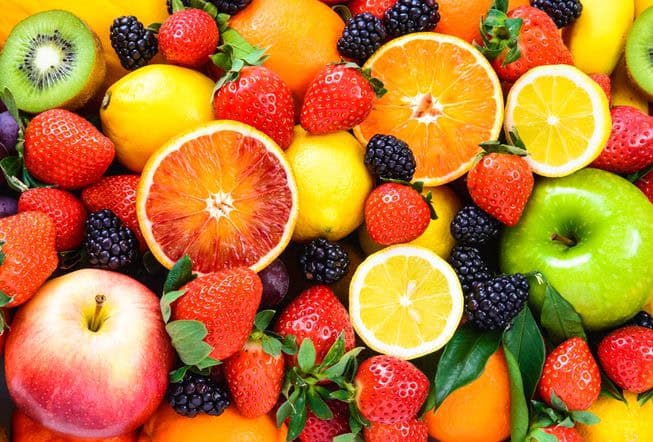
I want to be clear here, there are no foods that promote fat loss. By that I mean that there is no food that when you eat it will make you lose weight or shed body fat. I apologise for the slightly click bait title but it’s something that gets promoted a lot by fake diet gurus. I have a real dislike for these people so this headline is designed to get you attention and immediately bust that myth so you don’t get sucked in by them.
Fat loss only happens when you are in a calorie deficit, there is no fantastic magic food that will counteract the laws of thermodynamics.
That being said, there are foods that you can eat which will help you stick to your diet and keep you in a deficit while not making you hate life at the same time.
Low calorie or weight loss friendly Foods
If you are limiting your calorie intake then you want to be maximising your calories over foods that are high volume but low density. This means that they occupy more space in your stomach compared to low volume high density foods which don’t fill you up but have a load of calories in them.
Examples of weight loss friendly foods could be
- Banana – 87 calories per medium banana
- Apple – 100 calories per medium apple
- Strawberries – 31 calories per 100g of strawberries – that’s half a punnet
- Green leafy veg – around 20 calories per serving
- Celeriac – 17 calories per 100g – make them into chips, seriously they are awesome
- Melon – 25 calories per 100g – which is loads of volume
- Grated carrot – 64 calories per large carrot
You might be thinking – “does fruit make you fat?” Which is because people who don’t understand nutrition have told you it because some fake diet guru has told them. There’s a myth that fruit turns to fat easily because it’s made of sugar. In actuality when studied, excess of fruit only made it to fat storage in 1% of the excess calories. That’s not a lot.
Fruit is a perfect choice to bulk up your food volume without hugely impacting your total calorie allowance. When I dieted for bodybuilding shows I would eat a fair bit of fruit in the day to keep myself from going crazy due to the restricted foods I was allowed to eat. My clients also use fruit salads to keep themselves able to have sweet treats through the day and keep to their weight loss meal plan.
Eating high protein meals for weight loss
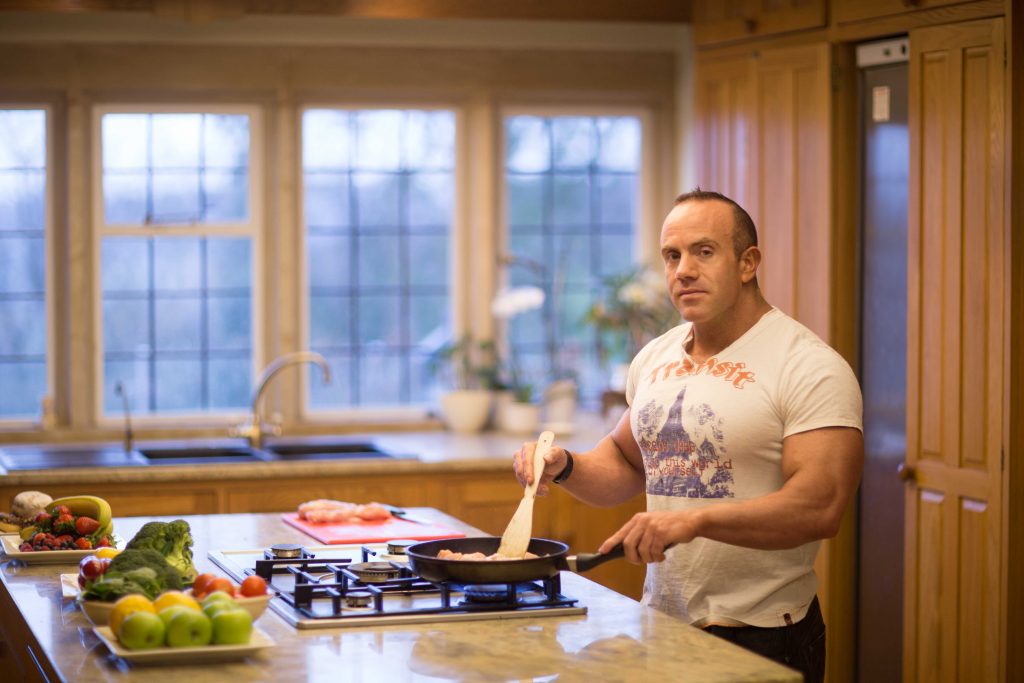
t’s virtually impossible to get fat from eating too much protein. There have been a few interesting studies that have ramped up protein intake as the variable and then the effects monitored. In pretty much every situation where higher protein was employed the subjects improved their body composition. This means they gained muscle and lost body fat. Let’s ignore their ‘weight’ for a minute which in some cases didn’t really move much, but they looked better. Higher protein diets have long been used to help build muscle but the second benefit you get is that higher protein helps keep you fuller and reduces your hunger massively.
When I’ve worked with clients, especially women, who are trying to lose weight and have limited calories to work with I often increase protein as part of the plan. You can see the results of these protocols on my website via my testimonials.
Higher protein diets help you lose weight. There’s no doubt about it from both my experience and from reading the research. Lean protein fills you up, takes longer to digest, helps you build lean muscle and as an added bonus has a TEF value (remember back at the start) of 70%. Which means if you eat 100 calories of protein you only get 70 calories out due to the high amount of energy needed to digest it. So protein is pretty good for weight loss.
Foods to reduce or avoid when trying to lose weight
I mentioned earlier that high volume, low density foods were good for helping with weight loss, the opposite of this are low volume high density foods. These are foods that don’t fill you up a lot but carry loads of calories in them. Meaning that it’s very easy to overeat calories by having them in your diet. Many of these foods are classified as ‘healthy’ which leads to further confusion with people trying to lose weight as they want to eat healthy.
I’m not saying to avoid these foods completely as many of them are loaded with micronutrients and vitamins. Just be mindful of how many calories they contain if you include them.
- Avocado – 276 kcal per average avocado
- Nuts – 182 kcal per 30g serving (not even a handful)
- Coconut Oil – 81 kcal per teaspoon of solid coconut oil
- Olive Oil – 36 kcal per teaspoon
- Salmon – high protein but also high in good fats – 326 kcal per medium fillet 150g
- Cereals – measure out the ‘30g suggested serving’ it’s absolutely tiny – 111 kcal per 30g
- Bagels – go for thins instead – 247kcal per average bagel
Can I lose weight without exercise?
In a word, yes. Fat loss is exclusively dependent on calories and having a calorie deficit. If you have used my calorie calculator then you can set the variables to include zero exercise and as long as you stick to those calories you’ll lose body fat and therefore weight.
Before you do this though, I want you to think back to the 4 elements of Total Daily Energy Expenditure. If you remove EAT – Exercise Activity Thermogenesis – then you’re cutting out what is potentially a huge eater of calories. Which means you WON’T be a huger eater of calories.
No one likes eating less food, be honest, you’d prefer to eat as much as you like and lose weight, yes?
Not exercising just doesn’t make sense to me. If you are looking to lose weight or body fat then it’s likely that you are also looking to be healthier and lead a healthy lifestyle. If you weren’t then you wouldn’t be that concerned about your weight would you? You’d just keep eating rubbish all the time and not give 2 hoots about how fat and unfit you were getting.
If you have been told to lose weight by the doctor but you want to do it without exercise or moving more then to be honest you’ll end up failing as you’ll still be in the mindset of an overweight, unfit person. Which means you’re pretending to lose weight, like a bad actor. The best actors live the life of the person they are playing, often they get so deep into their role that they become those people while on set. This is what you need to be, you need to become the person you want to be, a leaner fitter person and that person exercises.
So can you lose weight without exercise? Yes but you’ll probably not lose that much and it probably won’t stay off for a long time as you aren’t changing your lifestyle.
Summary – How many calories do you need to lose weight.
Knowing the amount of calories that you need to lose weight is just the tip of the iceberg. Real success in weight loss will come from consistent creation and maintenance of a calorie deficit and this takes a bit of planning, tracking and lifestyle change. Read my Ultimate Guide to Weight Loss for more information
There are ways to make your calories go further, with low calorie, high volume food and these can keep you fuller for longer and essentially give the illusion that you’re eating a ton of food but the total calories are really low. Part of the battle is keeping your stomach sending signals that it’s full to your brain. That’s why the Cotton Wool diet works for a while – yes that’s a thing but please don’t try it.
Eating higher protein for weight loss does work. It’s been proven by research and in my own practice where I’ve increased protein and therefore total calories and the client’s body fat has visibly dropped, despite eating more calories!
You can see results in your belly fat and overall body fat within 2 weeks if you are consistent with your weight loss plan, however you need to keep at it for at least 6 weeks to see the real results. You also need to keep building habits and routines that support the calorie deficit and make it easier for you to stay where you need to be.
Avoid higher calorie ‘healthy’ foods where possible when you are trying to lose weight. Healthy fats, vitamins and minerals can be obtained from supplements and they will have a lower calorie loads for sure.
Food is important and I do promote eating a healthy diet rich in lean protein, healthy fats, vegetables, fruit and complex carbs, however if weight loss is your ultimate priority right now, I’d take the hit on dropping the avocado and get the fats from a capsule instead.
Please do read my book Target Lean for a deeper dive into some of these topics. If this article helped you please leave a review or share it. You can also find more of my content on YouTube, Instagram and on my website.
